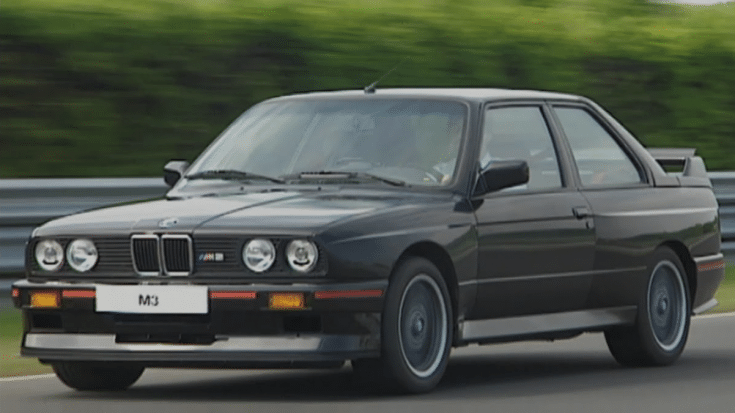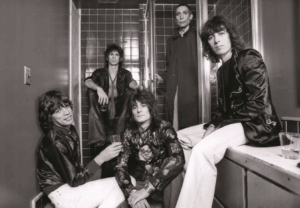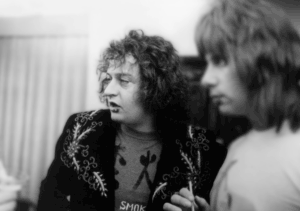10 ’80s Cars That Are Now Considered Classics

via The Wheel Network / YouTube
The 1980s were pivotal for the automotive industry, giving birth to many iconic vehicles that not only made their mark in history but also influenced the trajectory of car design and performance. Fast forward to today, and the allure of these classics is only intensifying. Whether it’s for nostalgia, their unique design, or sheer performance, the desire for 1980s cars is surging, which is simultaneously driving up their market values.
If you’re considering investing in a classic car, now might be the time to explore models from the 1980s before they become prohibitively expensive. However, some, like the Ferrari Testarossa, have already seen significant price increases, now commanding a strong market presence with a starting price of $64,400 for used models.
Here’s a list of ten classic cars from the ’80s That Are Now Considered Classics:
1987 Ferrari F40
View this post on Instagram
The Ferrari F40 stands as a towering achievement in the automotive world, celebrating Ferrari’s 40th anniversary with groundbreaking engineering and a fierce commitment to performance. Characterized by a lightweight, stripped-down design and a focus on aerodynamics, the F40 pushed boundaries with its extensive use of carbon fiber, Kevlar, and aluminum. The heart of its performance is the potent 471-hp 2.9-liter twin-turbocharged V8 engine, which propelled it into the spotlight as one of the fastest cars of its time. Tailored for speed and refined through racing technology, the F40 offered a raw driving experience that was unparalleled, making it a prized possession among collectors and enthusiasts the world over.
Initially built to a limited number due to the projected demand and exclusivity, only about 1,300 Ferrari F40s were produced between 1987 and 1992, making it exceedingly rare today. Its rarity and the mythic status among Ferrari’s pantheon of cars have driven its market value to astronomical heights, with top-condition models fetching up to $5,500,000 at auctions. The F40 did not just represent a car for the affluent; it became the poster child of an era marked by excess, performance, and design purity. Owning one today is seen not just as an investment but as holding a piece of automotive history that defined the ethos and capabilities of late 20th-century supercar engineering.
1981 DeLorean DMC-12
View this post on Instagram
The DeLorean DMC-12 is perhaps one of the most iconic cars of the 1980s, capturing the imagination of the public not purely through its performance but also through its dramatic design and cultural significance. Instantly recognizable by its gull-wing doors and brushed stainless-steel body, the DMC-12 was designed with the intention of revolutionizing sports cars with both aesthetics and material innovation. Unfortunately, driven by a relatively underpowered 130-hp V6 engine and plagued by various mechanical and financial issues, the DeLorean could not fulfill all its performance promises, leading to mixed reception from the automotive community. However, despite its shortcomings in speed, it remains a beloved classic, buoyed by its futuristic look and the nostalgia deeply embedded in popular culture, particularly through its role in the “Back to the Future” film series.
The vehicle’s induction into movie fame secured the DMC-12’s position as more than just a car: it became a symbol of the era and a desired collector’s item. Its production was brief and turbulent, spanning only 1981 to 1983, with fewer than 10,000 units produced. This scarcity, coupled with its distinctive design and movie star status, keeps the demand and prices for these vehicles relatively high. Collectors and enthusiasts cherish the DMC-12 not for its driving prowess, but for its unique character and the sheer joy it brings to fans of the automotive and cinematic worlds. Owning a DeLorean today taps into a deep vein of ’80s nostalgia and brings alive a piece of automotive and cultural history.
1984 Ferrari Testarossa
View this post on Instagram
The Ferrari Testarossa captivates with its flamboyant and distinctive design, anchored by its wide stance, stark side strakes, and striking red head (Testarossa) cam covers. Introduced to the world in 1984, this engineering marvel was equipped with a 4.9-liter flat-12 engine, producing power that made it one of the ultimate supercars of its time. Its appearance, with dramatic lines and an aggressive posture, was not just for show; it was a carefully thought out design that optimized airflow to cool its potent engine and improve handling stability at high speeds. The Testarossa was a staple of wealth and performance in the 1980s, symbolizing success and becoming an iconic representation of Ferrari’s commitment to excellence in automotive engineering.
With about 10,000 units rolling out of Maranello between 1984 and 1991, the Testarossa struck a delicate balance between exclusivity and accessibility in the realm of high-end sports cars. Today, its value in the market reflects a growing appreciation for its engineering, design, and the nostalgia of the era it encapsulates. Collectors and aficionados seek the Testarossa for its emblematic status, thrilling performance, and the visceral driving experience it offers—qualities that have cemented its position as a sought-after classic. Its significance in automotive history, combined with the increasing rarity of well-maintained models, ensures that the Testarossa remains not only a jewel of 1980s automotive design but a valuable and appreciating asset in the classic car market.
1984 Toyota MR2 MK1
View this post on Instagram
The 1984 Toyota MR2 MK1 emerged as a trailblazer, bringing the mid-engine sports car concept into the reach of everyday drivers. Its introduction marked a significant departure from the conventional sports cars of the time, offering a blend of affordability, reliability, and performance that was unheard of. The MR2 was compact, light, and wielded a nimble 1.6-liter engine that, combined with its innovative mid-engine layout, delivered a balanced and exhilarating driving experience. The MR2 wasn’t just about speed; it was about joyously engaging roads with agility and confidence. This vehicle became a favorite among driving enthusiasts for its focus on fun and functionality, without compromising on Toyota’s reputation for durability and low maintenance costs.
Over time, the MR2 MK1 has garnered a dedicated following, and its pioneering role in democratizing the sports car experience has not been forgotten. As more collectors and enthusiasts come to appreciate the unique blend of performance and practicality the MR2 offered, its market value and demand have seen an upward trajectory. Beyond its driving dynamics, the car is celebrated for its sleek, wedge-shaped design and pop-up headlights, which encapsulate the automotive design trends of the 1980s.
1984 Volkswagen Golf GTI Mk II
View this post on Instagram
The 1984 Volkswagen Golf GTI Mk II built upon the foundation set by its predecessor, the Mk I, enhancing the hot hatch formula with a more spacious interior and improved driving dynamics. The Mk II GTI is widely appreciated for perfectly balancing everyday practicality with engaging performance, thanks to its reliable and peppy 1.8-liter fuel-injected engine. Its front-wheel-drive layout and responsive handling charmed enthusiasts who desired an affordable and fun-to-drive vehicle that could effortlessly transition from commuter duties to spirited weekend drives. The boxy, yet iconic design of the Golf GTI Mk II, with its subtle body cladding, red grille trim, and plaid seats, has aged gracefully, reflecting the character and spirit of the 1980s. This enduring appeal is coupled with the GTI’s reputation for robustness, making original, well-preserved examples increasingly sought after by collectors and enthusiasts seeking to rekindle or discover the quintessential hot hatch experience.
The GTI’s legacy as the definitive hot hatch has helped maintain the Mk II’s standing in the classic car market. It’s seen by many as a purist’s choice, capturing a time when driving enjoyment was derived from simple, mechanical interaction with the car, rather than from layers of electronic assistance. This makes the Mk II GTI a cherished classic that continues to offer a level of engagement that is sometimes missing from modern vehicles. Values of the Golf GTI Mk II have been on the rise, especially for models that have been well cared for or tastefully modified in keeping with the spirit of the era. Its influence on the automotive landscape and continued admiration among aficionados ensure that the Mk II GTI remains a beloved and collectible icon.
1981 Range Rover Classic (Five-Door Version)
View this post on Instagram
The 1981 Range Rover Classic (Five-Door Version) took the groundbreaking luxury off-road concept introduced by the two-door Range Rover in 1970 and added a new level of practicality and utility. This added convenience made the Classic even more appealing to families and those requiring more accessibility without sacrificing its all-terrain prowess. The Range Rover’s ability to wade through rough landscapes with ease, while enveloping passengers in a cocoon of comfort and luxury, was an unmatched proposition for consumers. Its sturdy construction, combined with a powerful V8 engine, coil spring suspension, and permanent four-wheel drive, made it a vehicle as suitable for country estates as it was for the wilds of rural landscapes. The timeless design, characterized by its boxy silhouette and the elegant simplicity of its lines, has rendered the Range Rover Classic a true automotive icon.
As the years passed, the Range Rover Classic (Five-Door Version) gained traction as a collector’s item, primarily for those who value the mix of refinement and rugged capability. Its elevated status is reflected in the rising market values, especially for well-preserved or meticulously restored examples. The Range Rover Classic effectively created the luxury SUV segment, a testament to the brand’s foresight and engineering excellence. As SUVs and crossovers continue to dominate the automotive market, collectors are increasingly turning to the original luxury off-roader as a tangible piece of the genre’s history. This growing acclaim has ensured that the Range Rover Classic remains not only relevant but also a wise and desirable acquisition for connoisseurs and investors alike.
1986 Ford Sierra RS Cosworth
View this post on Instagram
The 1986 Ford Sierra RS Cosworth was a formidable contender within the world of motorsports, particularly in Group A racing. With its significant aerodynamic enhancements, exemplified by the bold “whale tail” rear spoiler, the RS Cosworth provided the downforce necessary for high-speed stability, making it immediately recognizable and aggressively styled. Under the hood, the Sierra RS Cosworth boasted a 2.0-liter turbocharged Cosworth YBB engine, renowned for its strong performance and tuning potential. This made for an exhilarating drive, with the rear-wheel-drive layout providing an engaging experience behind the wheel. Production of the street-going versions allowed for homologation, making this race-bred performance accessible to the public and ensuring its place in the pantheon of legendary performance cars.
Today, the Ford Sierra RS Cosworth is a highly sought after classic, with a particular appeal to those who appreciate the intersection of street legality and racing pedigree. Its rarity, combined with the potential for motorsport tuning, has driven up the desirability and value among collectors. The RS Cosworth has come to symbolize a period in automotive history where manufacturers were willing to push the limits of design and engineering to achieve dominance on the track, resulting in some of the most exciting production cars for the road. Original, unmodified examples command a premium in the market, and the enthusiasm surrounding the vehicle at classic car auctions and shows is a testament to its lasting legacy as a piece of high-performance motorsport history.
1989 Lancia Delta Integrale
Bekyk hierdie plasing op Instagram
The 1989 Lancia Delta Integrale is celebrated for its rallying pedigree, having dominated the World Rally Championship and yet offering enthusiasts the opportunity to experience this championship heritage on the road. The Delta Integrale is characterized by its turbocharged 2.0-liter engine, all-wheel drive, and wide, muscular wheel arches that accommodated a wider track for improved stability and grip. It was known for its exceptional handling dynamics and the ability to translate rally technology into a thrilling road car. Each iteration of the Integrale saw improvements in power output, handling, and aesthetics, and the 1989 model benefited from these continued developments. The car’s firm suspension, precise steering, and impressive acceleration made it a benchmark for performance hatchbacks in its time, and a highlight in the storied history of Lancia.
As a highly coveted classic in today’s market, the Lancia Delta Integrale holds strong appeal for its combination of dynamic excellence and historical significance in motorsport. Its rallying success contributes to its allure, particularly among enthusiasts who revere the golden era of rallying. The Delta Integrale is increasingly valued not only as a high-performance vehicle capable of delivering an adrenaline rush but also as a symbol of innovative automotive design. Owning a Delta Integrale is akin to preserving a piece of rally history, and pristine or rally-prepared examples are particularly revered. With its rally-bred heart and soul, the Integrale’s place in the collector car market is well-assured, attracting both nostalgic admirers and new fans who appreciate the blend of history, performance, and design that it represents.
1986 BMW M3 (E30)
View this post on Instagram
The 1986 BMW M3 (E30) is often heralded as one of the most iconic sports sedans of all time, with its racing lineage instantly recognized by car enthusiasts worldwide. It is powered by the high-revving S14 four-cylinder engine, designed for harmony between road driving and motorsports. The E30 M3 was a homologation special, meant to approve the car’s entry into Group A racing where it saw tremendous success. Its box-flared fenders, aggressive front and rear bumper spoilers, and an aerodynamically improved boot lid made the M3 visually distinct from the standard E30 models. This classic was not merely about straight-line speed; it was the epitome of a true driver’s car, renowned for its nimble handling, precise steering, and well-balanced chassis. The synthesis of performance and everyday usability made the E30 M3 an instant hit and a persistent favorite among driving purists.
In the collector car sphere, the BMW M3 (E30) has seen a substantial appreciation in its market value, driven by its rich motorsport history and praised driving dynamics. The original M3 is now a blue-chip collectible, with enthusiasts willing to pay premiums for well-maintained and low-mileage examples. Rarity of specific variants and special editions contribute to its collectibility, with factors such as originality, documentation, and provenance further influencing values. The E30 M3 captured a moment when performance cars strived for balance and engagement over raw power, a quality that endears it to contemporary collectors chasing that authentic driving experience. The E30 M3’s significance goes beyond nostalgia; it represents an era when engineering elegance and the joy of driving took precedence in performance car design, making it a treasured classic that continues to captivate the hearts of car enthusiasts around the world.
1986 Porsche 959
View this post on Instagram
The 1986 Porsche 959 emerged as an epitome of technological innovation and mechanical prowess in the realm of sports cars. Designed to push the boundaries of speed, the 959 was equipped with a sophisticated all-wheel-drive system, a twin-turbocharged flat-six engine, and an advanced aerodynamic body—all contributing to its legendary status. With a top speed of over 195 mph, the 959 became one of the fastest street-legal production cars at the time of its release. Beyond sheer velocity, it introduced groundbreaking technologies such as adjustable ride height and electronic damping control, setting new standards for vehicle performance and comfort. Initially conceived as a homologation model for Group B rallying, the 959’s limited production run of approximately 300 units has made it one of the most coveted Porsche models among collectors and enthusiasts.
Today, the Porsche 959 isn’t just admired for what it accomplished on the road and track; it’s revered as a milestone in the evolution of the sports car. Its influence extends beyond its era, with many of its innovations becoming foundational elements in subsequent generations of vehicles across the industry. The rarity, coupled with its historical significance and technological achievements, have propelled the 959’s value into the stratosphere, making it one of the most prized possessions in the automotive world. Owning a 959 today is synonymous with holding a piece of automotive history—a vehicle that encapsulates the zenith of 1980s engineering and ambition.



















